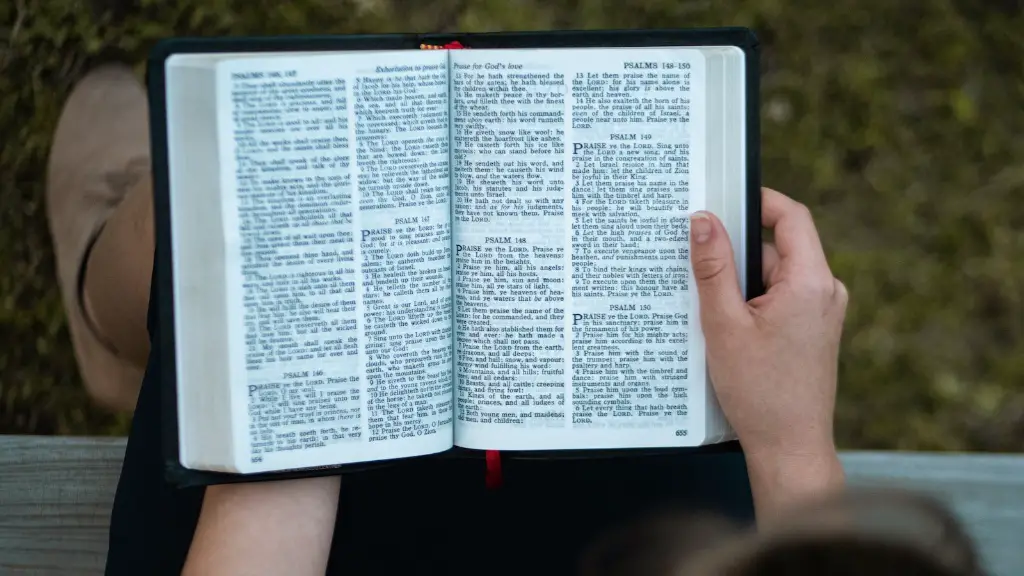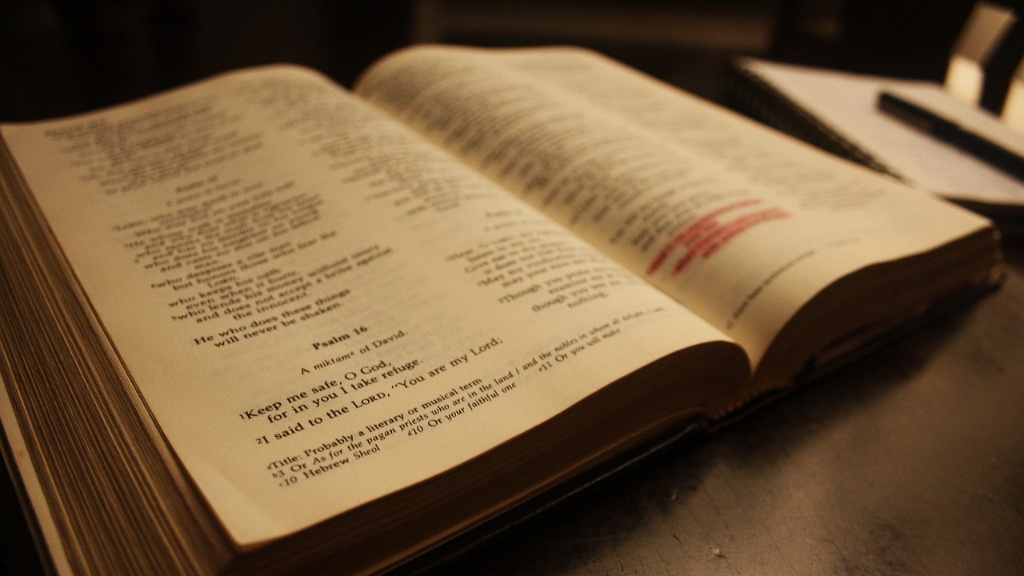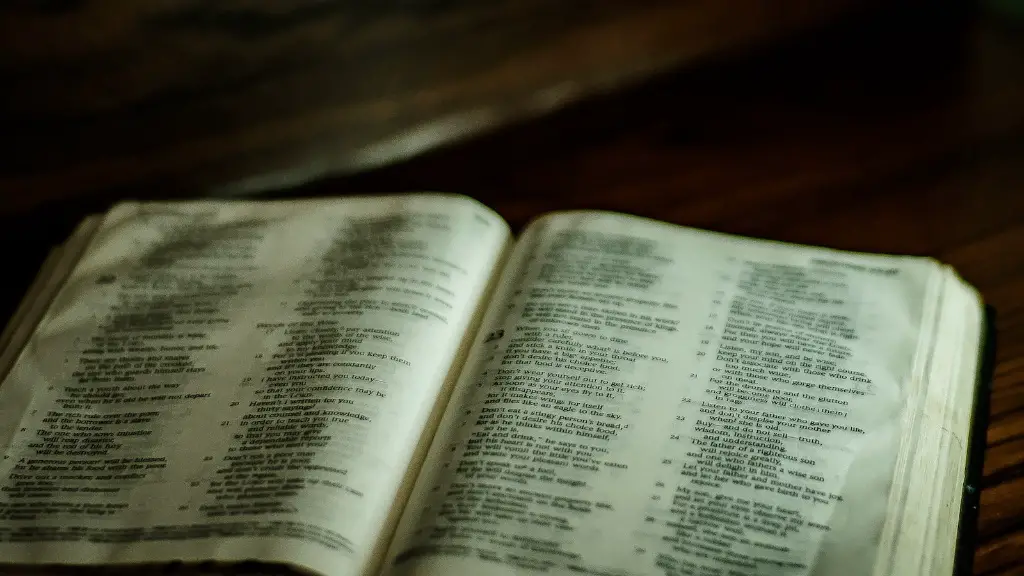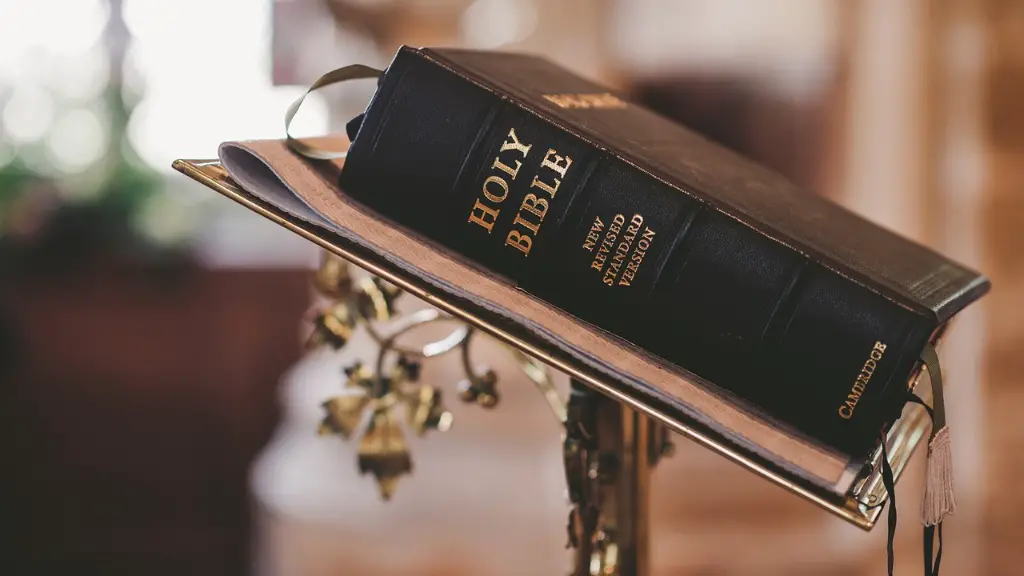The Book of Revelation is the final book of the Bible. It was likely written around 96 CE, during the reign of the Roman emperor Domitian. It was not included in the Bible until the fourth century.
The Book of Revelation was added to the Bible in the 4th century.
Who added the Book of Revelation to the Bible?
There is a lot of debate surrounding the author of the Book of Revelation and when it was written. The majority of scholars believe that the author was John of Patmos and that it was written during the reign of the Roman emperor Domitian. There is evidence to support this claim, but the debate continues.
The Book of Revelation is a Christian apocalyptic text written around 96 CE in Asia Minor. The author, known as “John the Elder,” was probably a Christian from Ephesus. The book describes a series of visions, including the Seven Seals, the Seven Trumpets, and the Seven Bowls of Wrath. These visions culminate in the defeat of Satan and the establishment of the New Jerusalem.
What is the oldest version of the Book of Revelation
Papyrus 47 is a New Testament manuscript written in Greek. The text includes the Book of Revelation 9:10-17:2. It is dated to the 3rd century and was found in Egypt.
The Christian tradition has considered the Book of Revelation’s writer to be John the Evangelist, the purported author of the Gospel of John. This identification is based on the fact that both books are written in similar styles and contain similar content. Additionally, early Church Fathers such as Irenaeus and Clement of Alexandria also identified the author of Revelation as John the Evangelist.
Was the Book of Revelation in the original Bible?
Revelation, the final book in the New Testament, was “squeezed into the canon in the fourth century,” said Pagels. Over the centuries, it continued to draw the ire of critics, from theologian Martin Luther to author DH Lawrence.
Pagels argues that the book of Revelation was not originally intended to be a part of the Bible, and that it was only included in the fourth century due to the political power of the church at the time. She states that the book has been heavily criticized throughout history due to its controversial and often cryptic content.
In Revelation 19-22, Jesus is revealed as the “Divine Lamb” who defeats the beast and its followers. The sword that proceeds from his mouth is the word of God, which destroys the enemy. This shows that Jesus is the ultimate ruler and that his word is powerful and effective against all evil.
What city was destroyed in the Book of Revelation?
The figure of Babylon in the Book of Revelation is a symbol of evil and corruption. In the final vision of the book, Babylon is destroyed, representing the triumph of good over evil.
The churches in this context refers to the seven churches of Asia Minor which were located in modern-day Turkey. These churches were founded by the Apostle Paul during his missionary journeys and were the most important early Christian communities in that region. The instructions given by Jesus Christ to John of Patmos were to write down what he saw in a vision and to send it to these seven churches. This vision is recorded in the book of Revelation, which is the last book of the Bible.
What is the capital city of heaven called
In the Book of Revelation in the New Testament, the city is also called the Heavenly Jerusalem. The Heavenly Jerusalem is the site of the final battle between good and evil and the home of the saved after the end of the world. Zion is another name for the Heavenly Jerusalem. Zion is the name of the mountaintop fortress where the Jews were evacuated to when they were under siege by the Romans.
The Codex Sinaiticus is a manuscript of the Greek Bible written in the 4th century. It is one of the oldest and most important manuscripts of the Bible. The Codex Sinaiticus was discovered in the mid-19th century at the Monastery of Saint Catherine in the Sinai Peninsula.
How many versions of revelation are there?
Revelation is a communication of some truth or fact that has been previously unknown. It can come in many different forms, but is generally classified into three types: general revelation, special revelation, and divine revelation.
General revelation is information that is revealed to all people, whether they realize it or not. It includes things like the laws of nature, the beauty of a sunset, and the conscience. Special revelation is information that is given to a specific person or group of people. It can come in the form of a dream, a vision, or an angelic messenger. Divine revelation is the highest form of revelation, and is when God Himself speaks to a person. This can happen in many ways, such as through an audible voice, a burning bush, or even a still, small voice inside one’s heart.
Revelation is an important part of our faith, because it is how we come to know things that we could not know otherwise. It is a way for God to communicate His truth to us, and to reveal Himself to us in a personal way.
The earliest manuscript of a New Testament text is the Rylands Library Papyrus P52, which is a fragment from the Gospel of John. This manuscript may date back to the first half of the 2nd century.
Did John the Baptist write any books in the Bible
There is a lot of evidence to support the tradition that John is the author of the Gospel of John and the other books ascribed to him. For one thing, the style and content of these books are very similar, indicating that they were written by the same author. Furthermore, early church authorities such as Irenaeus and Eusebius, who knew John personally, attest to his authorship of these books. Therefore, it is safe to say that the tradition that John is the author of the Gospel of John and the other New Testament books attributed to him is well-founded.
There has been much debate among scholars as to the authorship of the Book of Revelation. While most Christian Churches maintain that the book was written by St. John, the favorite disciple of Jesus Christ and the author of the Fourth Gospel, many secular scholars have expressed their doubts. Nevertheless, as St. John himself says in Revelation 1:9, “I, John, both your brother and companion in tribulation, and in the kingdom and patience of Jesus Christ, was on the island that is called Patmos for the word of God and for the testimony of Jesus Christ.” It is clear from this that St. John was indeed the author of the book.
Who wrote majority of the Bible?
The traditional authors of the New Testament are:
-Peter the apostle, who wrote the First and Second Epistles of Peter
-The author of the Gospel of John, who wrote the three Epistles of John
-Jude, a servant of Jesus Christ and brother of James, who wrote the Epistle of Jude
-James the Just, a servant of God and of the Lord Jesus Christ, who wrote the Epistle of James
It is interesting to note that it was not until the 5th century that all the different Christian churches came to a basic agreement on Biblical canon. The books that eventually were considered canon reflect the times they were embraced as much the times of the events they portray. It is clear that the canonization process was not a simple or straightforward one, but rather a long and complicated history.
Warp Up
The book of Revelation was added to the Bible in the late first or early second century.
The Book of Revelation was added to the Bible after the fall of Jerusalem in 70 AD. Prior to this, the book was circulated among Christian communities in Asia Minor.





